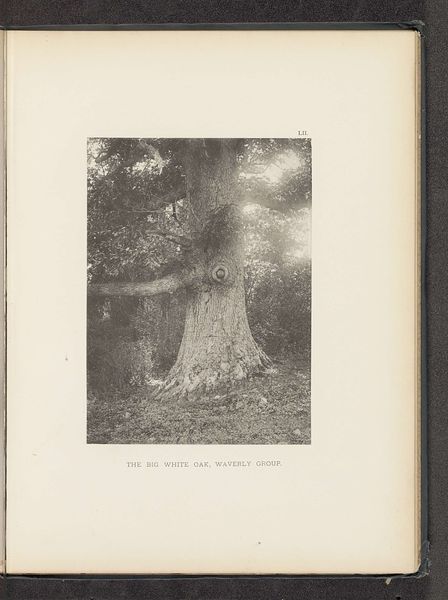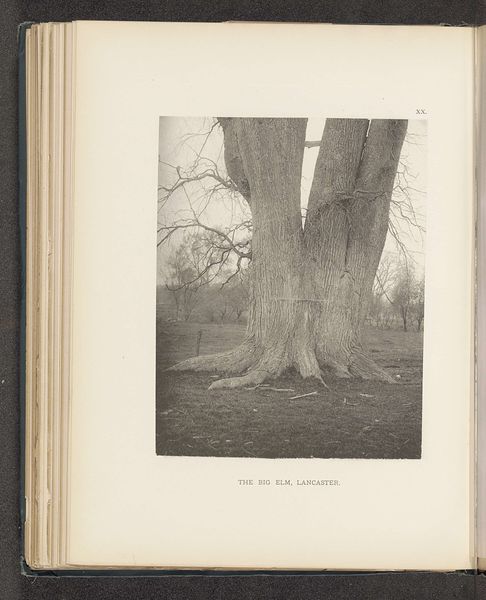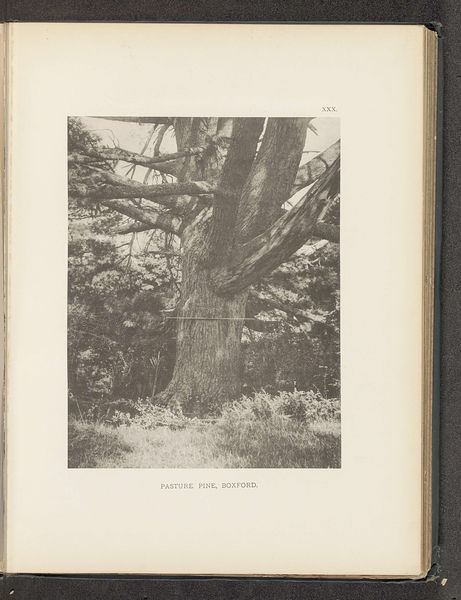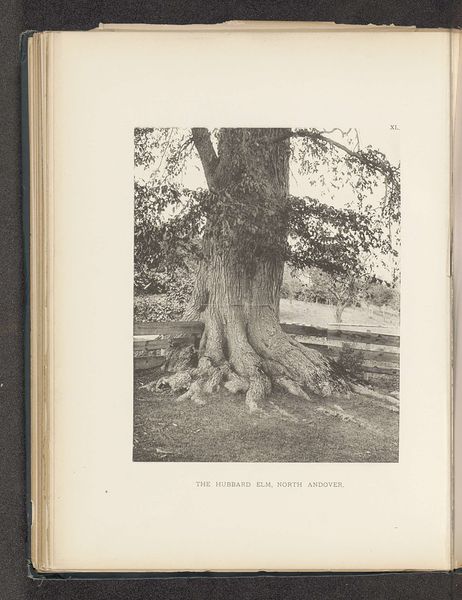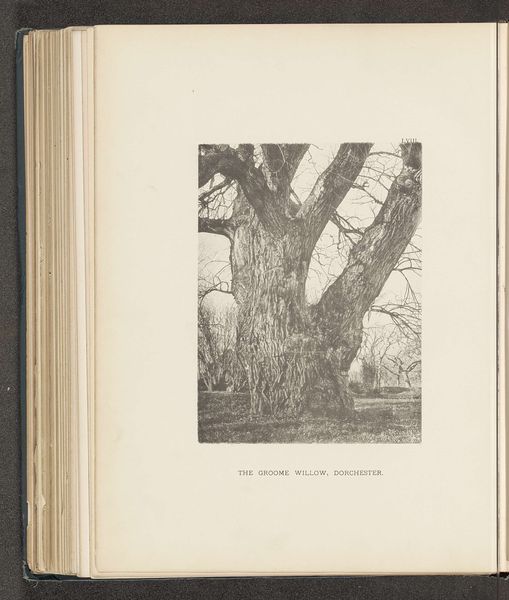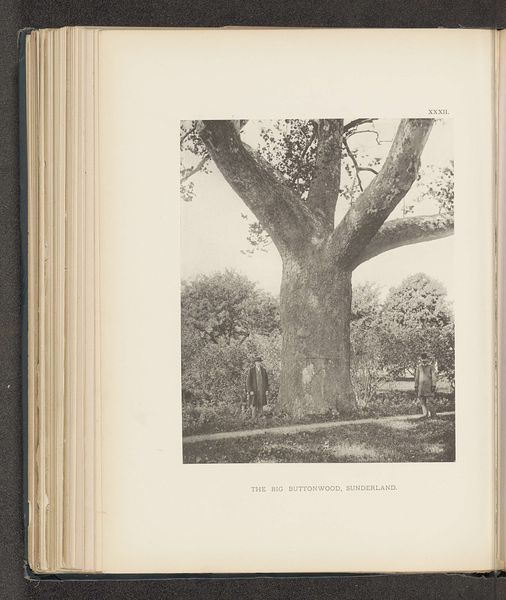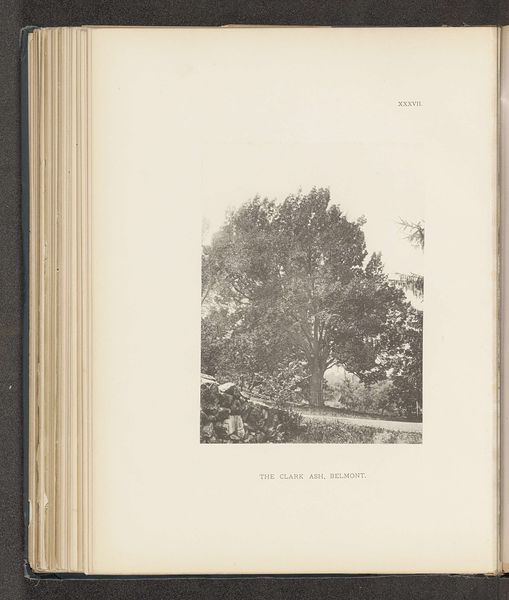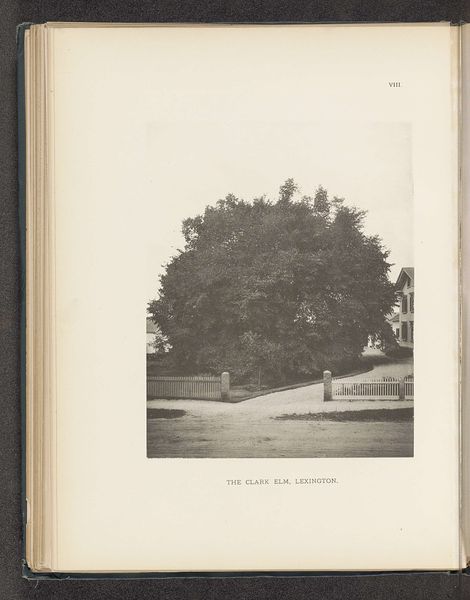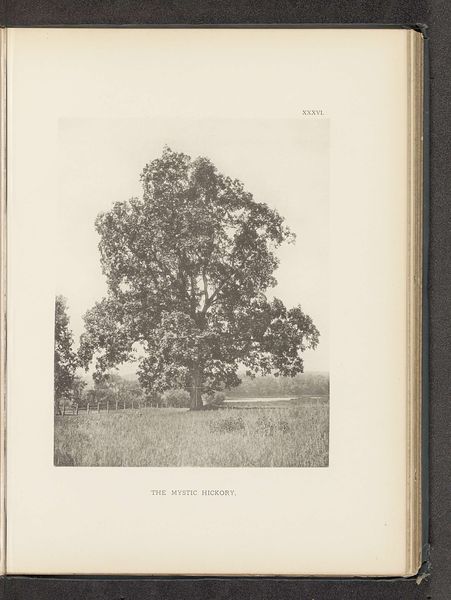
photography, gelatin-silver-print
#
landscape
#
photography
#
gelatin-silver-print
#
realism
Dimensions: height 192 mm, width 141 mm
Copyright: Rijks Museum: Open Domain
Editor: This photograph, titled "The Willard Elm, Deerfield," created before 1890 by Henry Brooks, is a gelatin-silver print showcasing an imposing tree. I find the strong verticality and texture quite striking. What do you see in this piece from a formalist perspective? Curator: The formal elements are indeed quite powerful. The composition relies heavily on the tree's vertical presence, bisecting the picture plane and creating a strong, stable structure. Note how the textures of the bark dominate the image. The photograph creates a kind of dialogue between the rough bark and the diffused light in the background, setting the spatial and tonal range. What impact does that contrast achieve, would you say? Editor: I think the stark contrast makes the tree feel almost monumental, but also sort of isolated within the composition, like it is not relating much to its background. It emphasizes the physicality of the tree itself. Curator: Precisely. The interplay of light and shadow, carefully orchestrated across the surface, accentuates form. Notice, too, the tonal scale employed, largely within a narrow band of greys, creating visual interest with very little difference in color value. Editor: That's interesting. The use of grey is striking and it emphasizes the texture in the bark so much. Curator: So, by analyzing these formal choices—the stark composition, the monochrome palette, and the tactile quality achieved through light and shadow—we gain insights into the aesthetic intentions of Brooks, regardless of what might have been intended at the time. We have an intensified sensory encounter through compositional analysis. Editor: This has really shifted how I was looking at the work. Seeing how you analyze light and shadow is really exciting. Curator: Indeed, through that approach of breaking down formal components, we recognize how an artist can elicit sensations and emotion through the interplay of shape, line, texture, and contrast. The visual language contains the message itself.
Comments
No comments
Be the first to comment and join the conversation on the ultimate creative platform.
